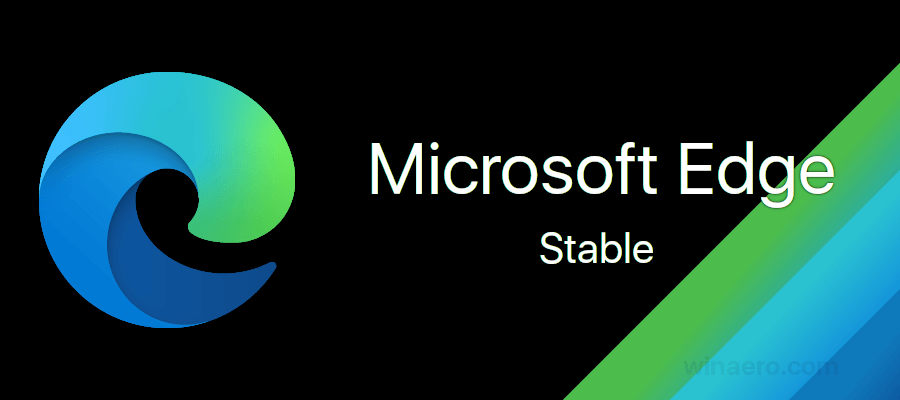Microsoft today released the stable version of the Microsoft Edge 94 browser. The full version number is 94.0.992.31. It starts transition to a 4-week release cycle, going hand-in-hand with what Google has implemented for its Chrome browser. Since Edge 93 was released less than a month ago, there aren't many changes in Edge 94.

What's new in Edge 94
Feature updates
- Microsoft Edge has completed the move to a 4-week cadence for updates. We have adopted a new 4-week release cycle for major versions. Read more here.
- New Extended stable option being offered. We are offering a new Extended Stable option to our managed Enterprise customers. The Extended Stable option will stay on even numbered revisions and update every 8 weeks. There will be a biweekly security update. Additional information here.
- Improvements to default behavior of opening MHTML files. MHTML files will continue to open in IE mode if IE mode is enabled, unless the MHTML file was saved from Microsoft Edge (using the Save As or Save Page As options in Microsoft Edge). If the file was saved from Microsoft Edge, it will now open in Microsoft Edge. This change will fix a rendering issue that was observed when opening an MHTML file in IE mode when saved from Microsoft Edge.
- Restrict private network requests to secure contexts. Access to resources on local (intranet) networks from pages on the internet requires that those pages be delivered over HTTPS. This change is happening in the Chromium project, on which Microsoft Edge is based. For more information, navigate to the Chrome Platform Status entry. Two compatibility policies are available to support scenarios that need to preserve compatibility with non-secure pages: InsecurePrivateNetworkRequestAllowed and InsecurePrivateNetworkRequestAllowedForUrls.
- Block mixed content downloads. Secure pages will only download files hosted on other secure pages, and downloads hosted on non-secure (non-HTTPS) pages will be blocked if initiated from a secure page. This change is happening in the Chromium project, on which Microsoft Edge is based. For more information, navigate to the Google security blog entry.
- Enable implicit sign-in for on-premises accounts. By enabling the OnlyOnPremisesImplicitSigninEnabled policy, only on-premises accounts will be enabled for implicit sign-in. Microsoft Edge won't attempt to implicitly sign in to MSA or AAD accounts. Upgrade from on-premises accounts to AAD accounts will be stopped as well.
- New accessibility settings page. We have brought accessibility-related settings together on a single page. You can find the new edge://settings/accessibility page under the main settings list. Here you can find settings to make the web page bigger, show a high visibility outline around the area of focus and other settings that can help improve your web browsing experience. We’ll continue to add new settings here in future versions of Microsoft Edge.
New Policies
- ApplicationGuardPassiveModeEnabled Ignore Application Guard site list configuration and browse Edge normally
- OnlyOnPremisesImplicitSigninEnabled Only on-premises account enabled for implicit sign-in
- WebRtcRespectOsRoutingTableEnabled Enable support for Windows OS routing table rules when making peer to peer connections via WebRTC
Obsoleted Policy
- UserAgentClientHintsEnabled Enable the User-Agent Client Hints feature
Advertisеment
Support us
Winaero greatly relies on your support. You can help the site keep bringing you interesting and useful content and software by using these options:
